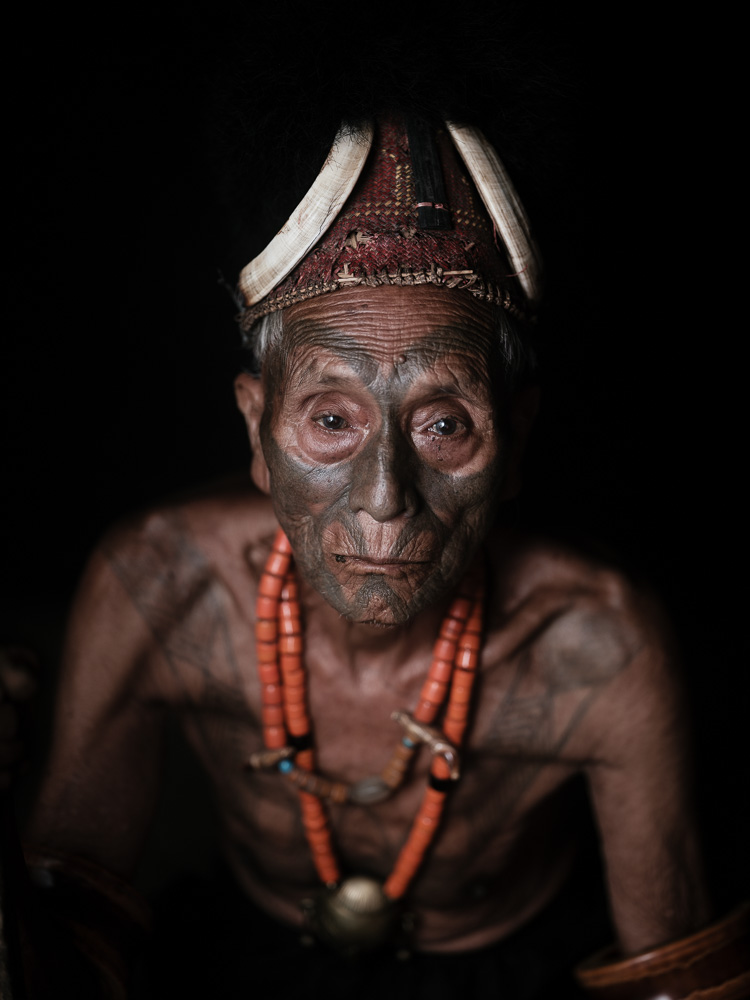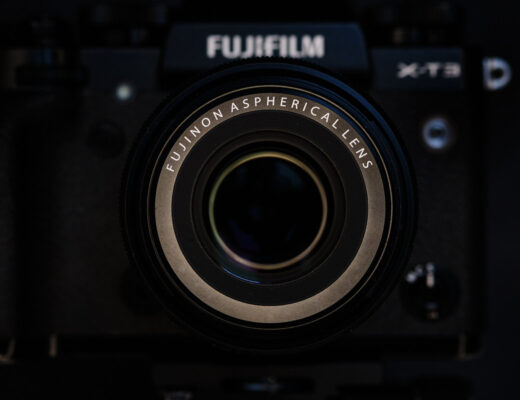The Fujifilm GFX 50S has got the world talking about medium format digital photography again. This time, it’s not just in terms of wishes and desires. The price of the system has put it in the reach of many professionals wanting the larger sensor and wealthy amateurs. It has been praised for its excellent image quality and relative portability in the medium format realm. But, as an Fujifilm X series user, just what are you getting for all that extra weight and money?
After switching from Nikon “full-frame” DSLRs to the Fujifilm X-T2 for all of my work, I haven’t missed much at all. Now, my kit is smaller and lighter, but I have all the benefits of shooting a mirrorless system and access to all of the Fujifilm glass that comes with using the X series cameras. So, when the announcement for the GFX came, I was more than a little intrigued. I’ve just spent six weeks using the GFX in Korea and India, so I’d like to share my thoughts on just what this camera is and how it compares.
Handling
Let’s just say, it’s a Fujifilm. The ergonomics of the X series cameras are there including the physical dials and programmable buttons. The moment I got the camera, I knew where everything was and was able to quickly reprogram all of the function buttons so it would handle just like my X-T2s. The couple of things that have taken a little while to get used to are the positioning of the focus lever, the playback button, and the drive button. These are all significantly different in their placement and muscle memory took a little while to kick in.
Another thing to consider with handling is the extra size and weight. Although the GFX is relatively small in the world of medium format photography, it is still much larger than the X series cameras. The weight of the body is closer to a prosumer DSLR, as is the size. However, the lenses are large and heavy. Most hover around 1kg in weight, which means if you plan to carry a few of them all day, you might need a good support system.
Autofocus
In the world of medium format, the GFX is quite good. It has all the functions you might expect from any other camera, like continuous tracking and face detection. However, everything is just that little bit slower than what we’re used to with the X system cameras now.
For those who are using the X-Pro2, X-T2, X-T20, or X-E3, using the GFX is going to feel like stepping back in time to an X-T1 or X-E2 at their release. Being a contrast detect only focus system, we can’t expect it to operate at the speed of the phase detect enabled sensors. However, for those who have used both an X-Trans II sensor and an X-Trans III sensor, you’ll know how much faster even the contrast detect points are. There is some hope that the Fuji firmware department will squeeze a little extra performance out of the GFX in an upcoming Kaizen firmware.
Image Quality
Here’s what we’re all after from the GFX, those beautiful medium format files. In short, it does provide. But, only if you play by its rules. The GFX will not take your photography to another level. It will not make you a better photographer any more than moving from an X-T1 to an X-T2 will. Only you can do that. It will, however, show you any flaws in your technique in great detail. A picture with no depth cannot be improved with dynamic range and megapixels. So, now that we’ve cleared that up, how does it stack up against the X series cameras?
Side by side, you’ll see that the GFX produces a lot more detail for a given scene. This is partly to do with the extra resolution (and Fujifilm’s redesign of the microlenses), partly to do with the sensor size, and partly to do with the spectacular medium format lenses. If you need the extra fine detail and resolution, the GFX is a no-brainer here.
Let’s talk about dynamic range. Fujifilm reports 14 stops of dynamic range being captured by the sensor. That sounds great. There are cameras out there that do better and worse by the numbers. In my day-to-day use, I found the GFX to produce much more malleable files that the X-T2. The X-T2 is no slouch, for sure, but the GFX gave nicer falloff into highlights and better shadow detail when I had to recover dark areas. This is especially true at low ISO values, but the gap closes as you increase the ISO.
For a moment, I want to talk about the falloff into highlights and shadow recovery. For me, as a portrait photographer, these are extremely important. They signify more information being recorded, which is great for achieving more lifelike tones in skin. I found that the GFX excels in this. Going from Nikon to Fuji X, I loved the way my Fujifilm cameras rendered skin. I feel like I’m making that jump again with the GFX. The extra tonality and better white balance makes portraits shot on the GFX really sing.
The Medium Format Look
Yes, it’s there. Perhaps not as much as some of the true full-frame medium format cameras like the Hasselblad H6D 100c, but then again, they’re in a whole different class. The so-dubbed “medium format look” is a function of the wider angle of view combined with shallow depth of field that you get from a larger recording medium. Therefore, it stands to reason that the “smaller” sensor in the GFX will not yield the look to the level of a larger sensor. However, it does render images with a great deal more tonality, extreme sharpness, and a quick falloff into out-of-focus areas.
Making use of the GF 110mm f/2 really showed me what the culmination of these qualities looks like. There is a three-dimensionality that simply cannot be achieved by the X series cameras. Once you find it, it’s hard to stop chasing it. Of course, the other lenses exhibit similar behaviour when used in the right ways. I was able to achieve a lot of depth when using the 23mm f/4 as well.
Exposure
An important thing to remember about the larger sensor of the GFX is that you’ll need to stop down almost two full stops with your aperture to achieve the same depth of field as on your X series camera. Moreover, if you’re looking to get the “best” quality out of the sensor, you’ll want to be at ISO 100, which is yet another stop of lost light. Let’s just say for a minute, you’re shooting your X-Pro2 at ISO 200, f/5.6, and 1/125. You’re happy with the depth of field and composition, so you decide to get a shot with your GFX. The aperture on the GFX will need to be f/11 to get the same depth of field, which brings your shutter speed down to 1/30. However, you also want to shoot at the base ISO of 100, so you’ll need your shutter to be at 1/15. Now you’re on a tripod. If your subject isn’t moving, that’s no problem at all, but this might be tough when shooting a portrait, etc. Of course, there are compromises you can make to get around all of these things, but it is important to remember that a lot more light is required to get equivelent exposures using the GFX.
In Conclusion
Here’s the point where I tell you that this was a borrowed camera (thanks Fujifilm!) and get real about whether I would purchase it or not.
My day to day professional work requires speed and timing. I shoot family sessions, engagements, and corporate events most of the time. For this, I feel that the GFX isn’t quite fast enough, has too much resolution (at least for the corporate and family work), and would require me to be far too static during my sessions. For this work, the GFX is a definite no.
However, my personal work, capturing the last tattooed faces of Asia and traveling throughout Asia, would be the ideal place for the GFX. Its extra dynamic range, detail, and colour rendition would be great for the printing I do for this project. That is a huge investment for a camera to use for personal work, however. In fact, I could travel to meet two more groups of people and photograph them with change to spare for a beer in the airport. The jury is still out on this one.
As you look at the GFX, I would encourage you to consider the points above, but mostly to consider your application. If the additional image quality is valuable in your work and the speed of operation won’t prevent you from shooting the work you want, I would say your credit card is probably already half way out of your pocket. Remember that you’ll be moving to a much more precise, but significantly slower tool by getting the GFX. Happy shooting!





















